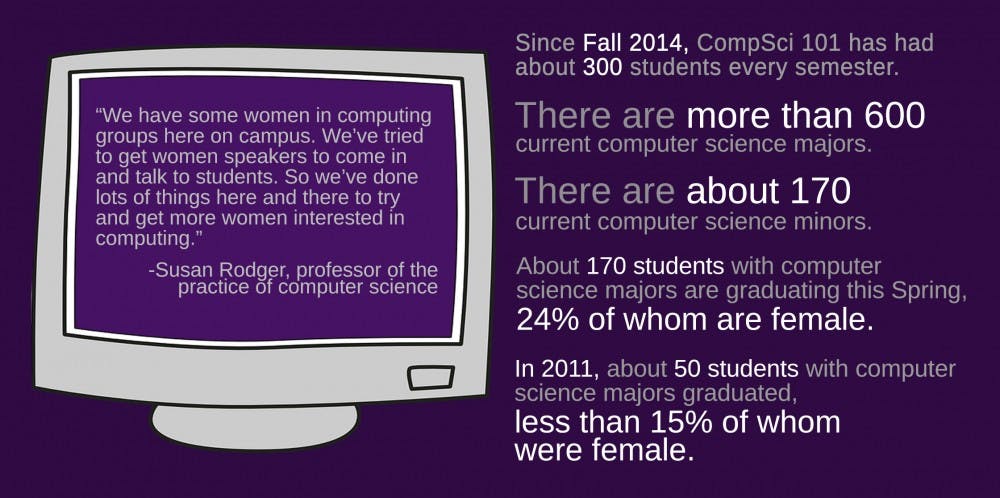Duke’s computer science department has become much more popular in the past decade.
There are currently more than 600 students majoring in computer science along with approximately 170 students pursuing minors in the field, Susan Rodger, professor of the practice of computer science, wrote in an email. This increase in popularity is due to the presence of technology in students’ everyday lives, explained Owen Astrachan, professor of the practice of computer science and associate director of undergraduate studies.
“I think students are much more comfortable with technology than they used to be,” Astrachan said. “Going 25 years ago was almost going into the stone ages. People didn’t really have computers…. The technology has changed a lot and student expectations have changed.”
There have been three surges in popularity of computer science nationwide, Rodger explained. She noted that the first wave arose in the early 1980s, when the personal computer had just been released. The second surge occurred in the mid-1990s as the Internet was developed, but ended during the dot-com collapse in the early 2000s. Rodger explained that the third surge of popularity is underway and that she does not see it ending soon.
“I think technology is so engrained in society, I don’t see it going down for a long time,” Rodger said. “And I think other people recognize that too. Around the country, departments are hiring more computer science faculty to teach classes and other departments also have huge growth—it’s not just Duke.”
Computer science classes have had large spikes in enrollment correlating to the recent surge. Enrollment in Duke’s introductory computer science course rose from 34 students in 2006 to approximately 300 students in Fall 2014, Rodger wrote in an email.
The program has modified its structure in order to accommodate the increasing popularity. Astrachan emphasized that the department has improved its courses to account for new technologies.
“The assignments are different,” Astrachan said. “You can go back and look at assignments from five, 10, 15 years ago, and we have changed the assignment to things that require more computing because the students’ expectations are different.”
In addition to the increase in popularity, the computer science program has seen a rise in the number of female students pursuing a degree. Rodger noted that 27 percent of the current majors and 34 percent of the minors are women. Five years ago, fewer than 15 percent of the graduating computer science majors were female. The introductory course, CompSci 101, has seen even more progress, with female students consisting of approximately 50 percent of the class enrollment.
“We’ve had a lot of dedicated efforts to increase the diversity in our classes. We have some women in computing groups here on campus,” Rodger said. “We’ve tried to get women speakers to come in and talk to students. So we’ve done lots of things here and there to try and get more women interested in computing.”
There are also many national efforts to increase women’s interest in computer science, such as Girls Who Code, an organization that helps give women opportunities to enter the field, and the Grace Hopper Celebration of Women in Computing conference. Duke’s department has partnered with the National Center for Women and Information Technology to develop strategies to make computer science more appealing to women.
Although the computer science program has expanded in the last few years, Astrachan said he sees even more potential for growth.
“We’ve been told we’re going to grow, but we think we need to grow faster so that we could be able to innovate,” he said.

